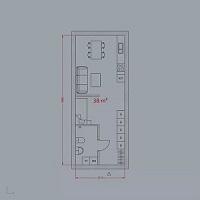 Tuesday, September 24, 2024
Tuesday, September 24, 2024  Tuesday, September 24, 2024
Tuesday, September 24, 2024 
As blogged on Architizer.com, new strides in generative design are being made with the development of Finch, a tool that can automatically generate floor plans based on the constraints of a site. Architecture studio Wallgren Arkitekter and Swedish construction company BOX Bygg collaborated to create the parametric design tool, which seeks to help architects understand potential site limitations in the early stages of the design process.
Currently under development, Finch will allow users to input data regarding building sizes and local planning regulations to create optimal internal plans in either two or three dimensions. It will be launched in 2020 as a plug-in to visual programming tool Grasshopper, within 3D computer graphics software Rhino. However, according to its creators, knowledge of Grasshopper or coding is not needed to reap the benefits of the tool.
This level of “user-friendly” is just one example within an entire phenomenon of generative design that is continuing to pick up steam. The possibilities for automation in architectural planning, as showcased by Finch, has been viewed online with both optimism and pessimism for architects and designers.
On the one hand, the potential benefits of generative design are endless. Using the power of computation, generative design can explore countless design solutions at an instant. On the other hand, some are concerned that increasing levels of automation will threaten the human component of creation and ideation. They fret that technology like this could lead to less experienced architects and CAD technicians struggling to find work, much like automobile factory workers have been made redundant by robotic manufacturing.